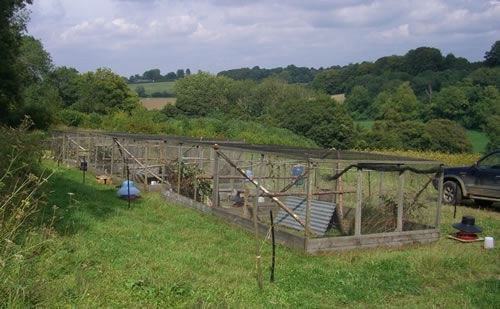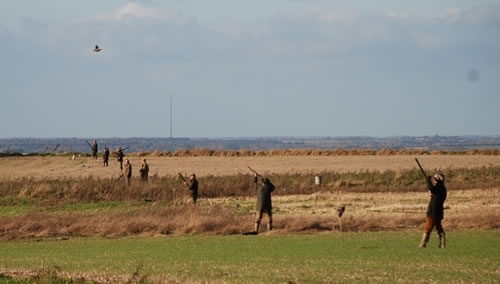By Malcolm Brockless, Game Manager at Rotherfield
When it comes to releasing pheasants onto an area where the wild grey partridge is the main priority, you may ask yourself:
“Why would anybody do it” and “what is the reasoning behind such a move”?
Actually, the reasons are pretty straightforward.
The reasoning revolves around the balancing of “Effort with Reward”.
 The release of moderate numbers of pheasants – at Rotherfield from movable pens - helps Grey partridge recovery where a shootable surplus of greys is the main driving factor for their conservation.
The release of moderate numbers of pheasants – at Rotherfield from movable pens - helps Grey partridge recovery where a shootable surplus of greys is the main driving factor for their conservation.
For anyone to make a serious attempt at restoring a wild grey population, to the point where a shootable surplus can be taken in most years, a set procedure must be put in place, and that involves effort.
Sadly, today most areas that are suitable for grey partridge have a very low stock level. The result is that there is little or no chance of any shooting, so, no shooting means no reward to the owner and keeper and as a result, no reward means little or no effort is put in to help the grey partridge.
But the future of the grey partridge is in the hands of the landowner that shoots, mainly because no one else is in a position to aid the recovery of that lowland sporting bird.
When one sets about the procedure of trying to restore a wild grey population from a low baseline, there is a lot of effort for little reward, as it takes as much effort to look after a small number, say a starting figure of 2 pairs per 250 acres as it does for 20 pairs per 250 acres.
I have done this, so I know the work involved. If the landowner is keen, and most of the farmed land is “set up” for grey partridges, it would take a good wild bird keeper at least 3 years to get from 2 to 20 pairs per 250 acres, but with little or no grey shooting as a reward for effort in those first 3 years.
After that initial 3-year period, and with continued management, greys could be shot in most years.
For many on partridge land, the short term quick fix ‘solution’ has been to release red-legged partridges on that ground.
However, as the last 30+ years have shown, it would be no quick fix for the grey population to do that. The redleg itself is not a problem to the grey partridge, as both can easily live side by side. It is the level of shooting that is the problem.
This is where the pheasant releasing comes into its own.
Pheasants, when managed correctly, are not a problem to the wild partridge. One big advantage of the pheasant is the size of the bird i.e. it is not partridge size! So little chance of somebody making a mistake on a shoot day…
The really big advantage of releasing bought in cock poults from small movable pens in August is that it can give worthwhile shooting in those first 3 years for the owner, and the keeper.
 Wherever Grey partridge restoration is driven by shooting, the correct balance of effort with reward lies at the heart of success or failure.
Wherever Grey partridge restoration is driven by shooting, the correct balance of effort with reward lies at the heart of success or failure.
This reward of some shooting will mean a great deal to the owner and his/her friends. To the keeper, it is most important to have some shooting, as it will be seen by other keepers as some reward for effort, till the grey partridge are in a fit state to shoot.
So, no reward will mean that the effort required may/will dwindle away, never to return, which has been the pattern for the last 40 years on many grey partridge areas.
Hence, get the procedure right, and the rewards will follow.
Please help us continue our work on this project